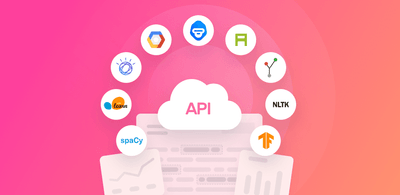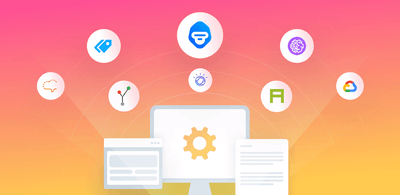An Introduction To Conversational Analytics

You probably already know that a great way to grow your business is to listen to what your customers want and need from you.
You also probably know that listening to the opinions of tens of thousands of customers is impossible without some help. Help in the form of artificial intelligence, text analysis, and conversational analytics.
Conversational analytics is essentially analyzing any kind of dialog between your organization and your customers for insights on their experience.
It is growing in popularity, and for good reason.
Here we'll explain what conversation analytics is, why it's useful, and how you can use it in your business.
Strapped for time? Jump head here:
- What Is Conversational Analytics?
- Applying Conversational Analytics
- How Conversational Analytics Works
- The Challenges of Conversational Analytics
- Takeaways
What Is Conversational Analytics?
Conversational analytics is the practice of using artificial intelligence, more specifically Natural Language Processing (NLP), to derive data from human conversations with customers and respond appropriately.
NLP combines linguistics and computer science to understand human language in all its forms, whether in email, customer support calls, social media interactions, and more.
Using conversational analytics, you can analyze thousands of pieces of data and find useful insights present within this data in seconds.
For the purpose of analysis, conversation is normally divided into voice data and text data.
Within voice data you have things like calls with customer service agents.
Text data then includes emails, bot chat transcript feedback, social media conversations and more.
The Benefits of Conversational Analytics

There are some clear pros to performing conversational analytics. These can have a direct positive impact on your business. Some of these benefits include:
1. Identify and addressing customer pain points
By analyzing interactions you have with your customers you can easily identify what frustrates them about doing business with you. You can also identify the triggers of customer frustrations. Then you can not only resolve the issues before they get out of hand but also prevent them from happening again.
2. Making informed business decisions
Your customers are the ones buying your products so it makes sense that you should use customer insights to make important business decisions that will impact their experience.
3. Increasing customer satisfaction
When you're making informed decisions based on insights pulled from your data, you're more likely to be making decisions that will increase customer satisfaction. This in turn will increase customer loyalty and ultimately customer retention.
4. Benefiting from the data you already have
Current data regulations can make it hard to gather third party data. However, chances are you already have a wealth of insights regarding your customers, you just have to tap into your data. So, if you already have the data, why not harness that data?
5. Lighten the workload for your teams
Conversational analytics is AI-powered and therefore automated and fast. It's also scalable and can take on huge amounts of data. This takes the burden away from your teams. It also can reduce processing and error fixing costs attached to manual analysis.
Applying Conversational Analytics
Conversational analytics is at play in most people's lives, whether they know it or not.
Examples of this are any interactions with Amazon's virtual assistant Alexa or chat bots that you communicate with when you contact a company's customer service department.
Both Alexa and the chatbot are forms of AI that have been trained to converse with the customer. They need to understand the customer and provide them with an answer to their query.
Here we'll take an in depth look at 4 ways you can use conversational analytics in your organization.
1. Enhance Customer Service
Conversational analysis allows you to analyze interactions between customer service representatives and customers. This could be call logs, emails, chat logs, or social media interactions.
Through this analysis you can discover any communication issues and see if the customer is being given the resolution they need.
If you identify issues in the process, you can then put measures in place to fix these problems.
By monitoring conversations you can also see where you can improve the training of your customer service agents. This way they will be able to solve customer queries efficiently and effectively going forward.
2. Predict Customer Behavior
There are often insights hiding within customer emails or conversations with customer service agents that might suggest how they are likely to act in the future.
An example could be an email from a customer where they express frustration at issues they have faced with your product.
If you miss that email, or don't fully address their issue, you miss the opportunity to correct the problem, keep their business, and potentially gain referrals in the future.
However, if you catch this issue in analysis, you can see their frustration, predict that they may churn if not addressed, and therefore do what you need to do to retain them.
3. Get Product Insights
If you've recently launched a new feature, you can get insights into how well that is working out for your customers by analyzing conversations.
Conversational analytics can tell you if there are bugs that need resolving.
You can also learn through conversational analytics whether new features or products are needed by your audience. This can present an opportunity to grow your product offering and your business.
This can all be done by looking at interactions with customer service agents, and on social media.
4. Personalize the Customer Experience
Customers expect a personalized experience because that's exactly what their favorite brands are giving them.
In order to stay competitive, you need to offer them this too.
With techniques like conversational analytics and natural language processing, you can dig into why they feel like they do, what motivates them to buy, and then offer a personalized experience based on all of that.
This will improve their customer experience and make them more likely to purchase because it's easier to do so.
How Conversational Analytics Works
As we've touched on, conversational analytics uses natural language processing (NLP) and machine learning. So to understand how it works, we'll need to understand these techniques.
Simply put, machine learning is where a computer model is taught by a human how to do a particular task or tasks, i.e. flag certain keywords in an email from a customer.
The computer then learns to flag those keywords on their own. This is known as keyword extraction.
Machines are also able to make associations between words and phrases and differentiate between them too. For example, a machine can recognize opinions in conversations based on the sentiments of words. Here's an example below:

As the machine learns, it builds on its existing knowledge. It starts to independently analyze texts and make predictions regarding the meaning of those texts with knowledge that goes beyond what they were originally trained with.
Conversational analytics models are able to learn how to understand human language by breaking it into fragments.
These fragments are then converted into values which are called vectors. These are values that the computer can understand and remember, to make predictions in future analysis. In the case of chatbots and AI assistants, they can then respond to the customer using their knowledge.
The more conversational data you feed your models, the broader their knowledge will be and the more accurate their results will be.
This means that for conversational analytics to be successful, you're going to need a lot of data.
For a more in depth explanation on how NLP works, check out this comprehensive guide.
Conversational Analytics Challenges
While great, conversational analytics is not without its challenges.
Human language is not always easy to understand. It is full of ambiguities that even humans can struggle to understand.
While improvements are being made all the time, the following language issues can trip up a conversational analysis model:
Sarcasm. This is tricky because with sarcasm people say the opposite of what they mean. This is only picked up on by the tone they use or by context. By analyzing within a conversational context it becomes more achievable for a machine learning model.
Slang. New slang can be challenging to computers as it falls out of the range of standard dictionary definitions. However conversational analytics models have come a long way and the more they see these words, the more they learn.
Typos. Word or sentence errors can be confusing to a model and could make or break your analysis. This can be eased by running auto spelling corrections before analysis.
Synonyms. We have a number of different ways to say the same thing in our language. This can present a challenge to a model if it is not trained appropriately with a number of synonyms introduced.
Takeaways
If you are not analyzing the conversational data you have with your customers, you're potentially missing out on a wealth of customer insights.
Conversational analysis offers a way to use your existing data to find insights that can help you provide a better overall customer experience.
This in turn can help you sell more products and services, reduce churn, and ultimately grow your profits and your business.
In order to carry out conversation analysis though, you also need the right tools.
MonkeyLearn offers a suite of tools that help you analyze your conversational data using machine learning and natural language processing techniques like sentiment analysis.
These tools work automatically and can help you reach your insights in a matter of seconds. You can then view them all in one place with our studio dashboard:

Make the most of the conversational data you have with your customers, sign up for a free MonkeyLearn demo today and discover the insights within.

Rachel Wolff
May 6th, 2022






